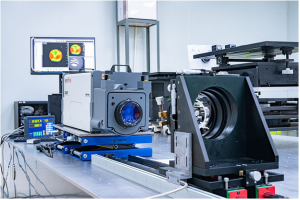The infrared lens is an imaging optical component for the infrared thermal imager. The quality of the infrared thermal imager lens directly affects the imaging quality and the implementation and results of the algorithm.
The difference between infrared lens and ordinary lens:
1. The wavelengths of visible light and near-infrared light are different;
Visible light range: 360nm – 700nm
Infrared range: 700nm – 14000nm
2. Due to different wavelengths, the focus surfaces are not together;
According to the working band of the infrared thermal imager, the infrared lens can be divided into long wave infrared lens, medium wave infrared lens and short wave infrared lens.
Long-wave infrared lens: its working band is (8 – 12 μ m) , mainly detect low-temperature objects.
Medium wave and short wave infrared lens: its working band is (0.15 – 7 μ m) It mainly detects objects with high temperature above 500 ℃, such as fire research.
The optical imaging objective of the infrared thermal imager collects the radiation in the working band and focuses it on the detector. In the visible light band, glass is a good projection material, but in the medium wave and long wave infrared bands, this material is opaque, so crystal materials such as germanium and silicon are often used. In order to improve the transmittance, a layer of antireflective film is also needed. These materials and films, like filters, limit the wavelength of the lens to a certain range.
The function of the infrared optical imaging objective lens is to filter and cut off the visible light while allowing the infrared to pass. Through it, the infrared ray is separated in the environment where visible light and infrared ray coexist. Add infrared lens to filter visible light to obtain pure infrared effect.



